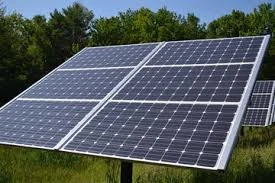sizes of solar panels available
Understanding the Sizes of Solar Panels Available
As the demand for renewable energy sources continues to grow, solar panels have become an increasingly common sight on rooftops and in solar farms. One of the critical factors to consider when investing in solar technology is the size of the solar panels available. The dimensions of solar panels can significantly affect their efficiency, placement, and overall energy output. This article aims to provide an overview of the different sizes of solar panels available on the market today.
Solar panels typically come in a few standard sizes, primarily influenced by their design and the number of solar cells they contain. The most common size for residential solar panels is 60-cell and 72-cell configurations. The 60-cell panels generally measure around 65 inches by 39 inches (approximately 1.65m by 1m), while the 72-cell panels are larger, measuring around 77 inches by 39 inches (approximately 1.96m by 1m). These panels are designed to fit standard mounting systems, which makes installation simpler and more efficient.
For commercial applications, larger solar panels are often preferred. The 96-cell solar panels, which measure around 77 inches by 39 inches as well, maximize the energy output per unit area, making them ideal for large installations where space is less of a concern. These larger panels can yield significantly more power, contributing to faster return on investment and improved cost efficiency.
The wattage of solar panels also varies by size. A typical 60-cell solar panel can produce between 250 to 350 watts of power, while a 72-cell panel can generate between 300 to 450 watts. For example, high-efficiency models like those produced by leading manufacturers such as SunPower and LG may offer higher output within these ranges due to advanced technology and better solar cell design.
sizes of solar panels available

In addition to the common sizes mentioned, there are also smaller solar panels available for specific applications. These compact models generally feature fewer cells, such as 36-cell panels, which are ideal for small installations like RVs, boats, or powering small appliances in off-grid situations. A 36-cell panel typically measures around 65 inches by 22 inches and can produce anywhere from 100 to 200 watts, catering to niche markets that require mobility or limited power supply.
When considering the size of solar panels, one crucial aspect is the available roof space or the area designated for installation. Homeowners and businesses must evaluate where they will place the panels and how many can fit in that space. For example, in urban settings where roof space is limited, opting for high-efficiency panels might be more beneficial, as they can generate more power per square foot than standard panels.
Furthermore, the weight of solar panels is another factor to consider, especially for rooftop installations. Larger panels tend to be heavier, which might require additional structural support depending on the roof's design and materials.
In conclusion, the sizes of solar panels available on the market range from small, portable units to large, high-output models suited for commercial use. Factors such as efficiency, space availability, and desired energy output should play significant roles in determining which size is most appropriate for your needs. By understanding these variables, you can make informed decisions and contribute to a more sustainable future through solar energy.
-
Unlocking Energy Freedom with the Off Grid Solar InverterNewsJun.06,2025
-
Unlock More Solar Power with a High-Efficiency Bifacial Solar PanelNewsJun.06,2025
-
Power Your Future with High-Efficiency Monocrystalline Solar PanelsNewsJun.06,2025
-
Next-Gen Solar Power Starts with Micro Solar InvertersNewsJun.06,2025
-
Harnessing Peak Efficiency with the On Grid Solar InverterNewsJun.06,2025
-
Discover Unmatched Efficiency with the Latest String Solar InverterNewsJun.06,2025







